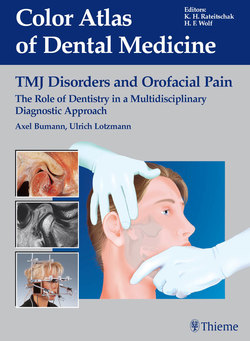Читать книгу TMJ Disorders and Orofacial Pain - Axel Bumann - Страница 9
На сайте Литреса книга снята с продажи.
ОглавлениеPreface
Medicine and dentistry are continuously evolving, due largely to the influences and interactions of new methods, technologies, and materials. Partly because of outdated testing requirements, our students can no longer adequately meet the increasing demands these changes have placed on a patient-oriented education. With limited classroom and clinic time and an unfavorable ratio of teachers to students, the complex interrelations within the area of dental functional diagnosis and treatment planning are precisely the type of subject matter that usually receives only perfunctory explanation and demonstration in dental school. Consequently, recent dental school graduates are obliged to compensate for deficiencies of knowledge in all areas of dentistry through constant continuing education. And so the primary purpose of this atlas is to provide the motivated reader with detailed information in the field of dental functional diagnosis by means of sequences of illustrations accompanied by related passages of text. The therapeutic aspects are dealt with here only in general principles. Diagnosis-based treatment will be the subject of a future book.
The method of clinical functional analysis described in detail in this atlas is based largely on the orthopedic examination techniques described earlier by Cyriax, Maitland, Mennell, Kalternborn, Wolff, and Frisch. Hansson and coworkers were the first to promote the application of these techniques to the temporomandibular joint in the late seventies and early eighties. In cooperation with the physical therapist G. Groot Landeweer this knowledge was taken up and developed further into a practical examination concept during the late eighties. Because the clinical procedures differ from those of classic functional analysis, the term “manual functional analysis” was introduced.
The objective of manual functional analysts is to test for adaptation of soft-tissue structures and evidence of any loading vectors that might be present. This is not possible through instrumented methods alone. The so-called “instrumented functional analysis” (such as occlusal analysis on mounted casts or through axiography) is helpful nevertheless for disclosing different etiological factors such as malocclusion, bruxism, and dysfunction. Thus the clinical and instrumented subdivisions of functional diagnostics complement one another to create a meaningful whole.
In recent years the controversy over “occlusion versus psyche” as the primary etiological element has become more heated and has led to polarization of opinions among teachers. But in the view of most practitioners, this seems to be of little significance. In an actual clinical case one is dealing with an individualized search for causes, during which both occlusal and psychological factors are considered.
Within the framework of a cause-oriented treatment of functional disorders one must consider that while the elimination of occlusal disturbances may represent a reduction of potential etiological factors, it may not necessarily lead to the elimination of symptoms. The reason for this is that there can be other etiological factors that lie outside the dentist’s area of expertise.
Some readers may object to the fact that the chapters “Mounting of Casts and Occlusal Analysis” and “Instrumented Analysis of Jaw Movements” do not reflect the multitude of articulators and registration systems currently available. We believe that for teaching purposes it makes sense to present the procedural steps explained in these chapters by using examples of an articulator and registration system that have been commercially established for several years. This should not be interpreted as an endorsement of these instruments over other precision systems for tracing and simulating mandibular movements.
Fall 2002
Axel Bumann
Ulrich Lotzmann
